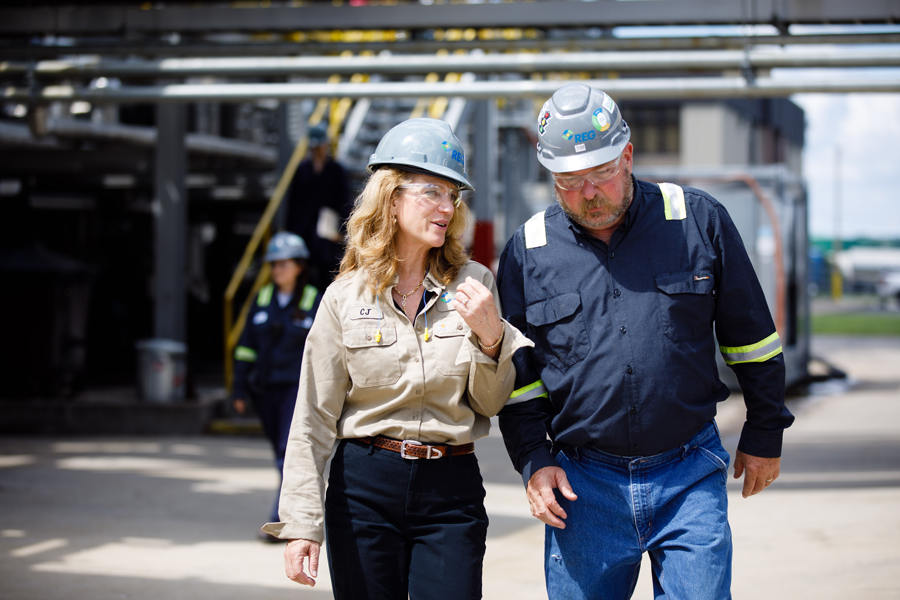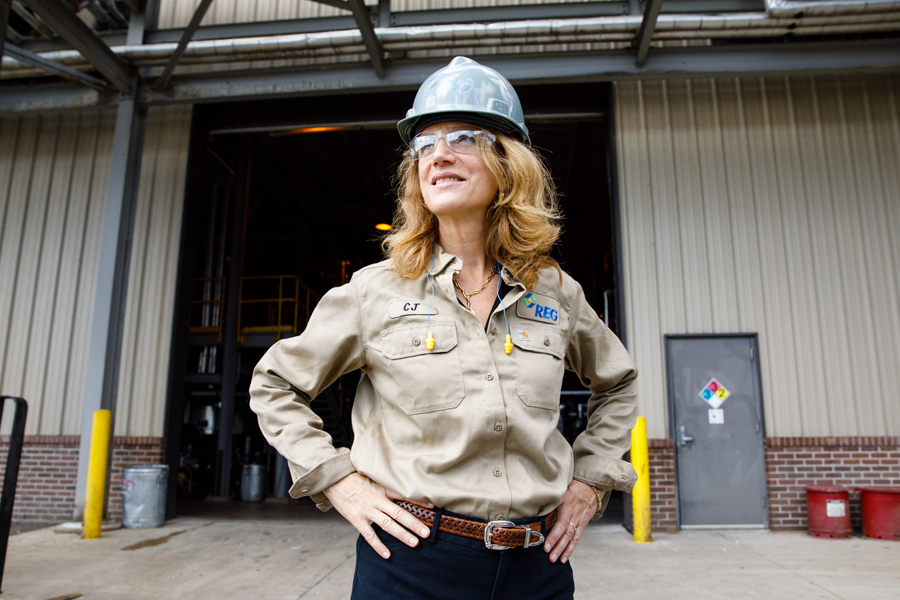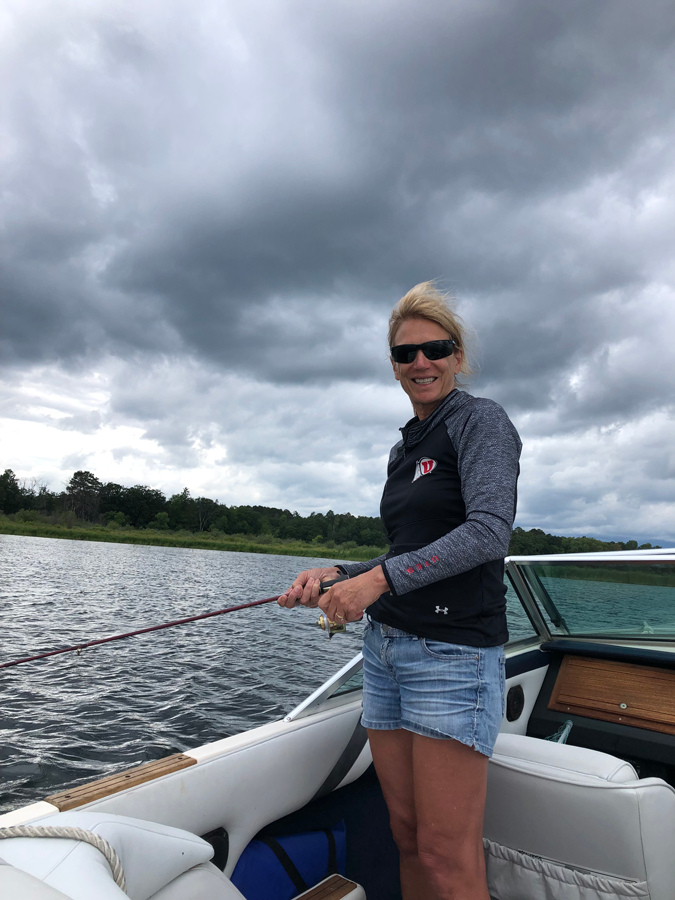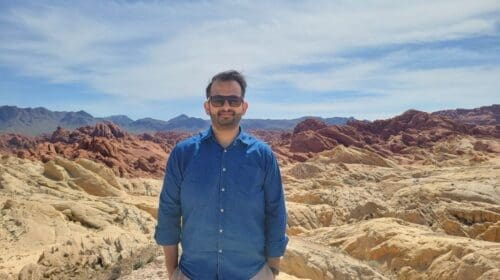Leading the charge in the race to find innovative solutions to the energy challenges the world faces is a heavy responsibility for any CEO or board member, but CJ Warner, who has held both roles, has a clear-eyed, yet optimistic, view for someone carrying the weight of the world on her shoulders. Where others see nearly insurmountable obstacles, as the clock ticks on climate change and decarbonization, she sees opportunities.
“I could never have selected a more exciting industry to be part of,” Warner says, citing the diverse challenges found in the various sectors, and “the essential nature of the industry’s contribution to society – the meaning behind it. The work I’m doing really is important, so there’s purpose behind it, and I really love that.”
A Sea Change
While it may seem to the general public that the energy transition is a relatively new concept, Warner has the advantage of a retrospective view, having spent nearly 45 years in the industry. A graduate of Vanderbilt University (‘80) with a bachelor’s degree in chemical engineering and an MBA from the Illinois Institute of Technology, she says, “I actually still remember where I was when it hit me that something different was going to have to happen during my lifetime.”
Working for bp in Aberdeen, Scotland, where, among other things, she was responsible for all its partner operated production in the North Sea, Warner observed that, one by one, many of the wells were coming off production much more rapidly than what had been projected. “It was making me stand back and think really hard about volume sustainability and where energy was going to come from for my kids, who were little at the time.” She’s not sure whether she was being protective as a mother or whether the gray, rainy weather of Aberdeen was affecting her mood, but she says, “It hit me that change was going to need to be made.”

Birth of a Movement
The concept of renewable feedstocks using existing infrastructure made sense to Warner, considering how much had already been invested in the oil production and delivery sector, as well as transportation and other modern improvements. To the extent that those things could still be utilized, it would reduce the environmental footprint caused by demolishing existing infrastructure, in order to build new, and it would have the potential to make things even more renewable.
“Throughout my whole career, even within the oil majors, I’ve always been a bit of an environmentalist and an intrapreneur, as it were, continuously trying to help reduce the level of pollution and produce cleaner energy.” Warner remembers checking off a mental list of improvements that could be made: Reduce criteria pollutants, improve environmental footprints, use more renewable feedstocks, and continue to use existing infrastructure.
“This was in the days of Lord Browne, beyond petroleum, at bp. It really was the birth of a movement. We did start experimenting with bringing renewable feeds into refineries and experimenting with using more hydrogen as a fuel. It was before its time and was met with a little bit of derision in those days. But I’m glad that we got things started back then because it is a long journey and there’s still a lot more for us to do.”

Refining of the Future
Despite her awareness of environmental issues, much of Warner’s early career was spent in the downstream sector in refining, which typically involves heavy industrial pollution. After joining Amoco in 1983 and working in the refining system, she eventually worked in more than 30 refineries both in the U.S. and abroad. Later, at Andeavor (formerly Tesoro), she oversaw the company’s refining business. Having that extensive experience gives Warner unique insight into the role refineries will play in the energy transition.
“From a historical standpoint, most refineries started before society had any kind of proper appreciation for protecting our environment and that was true for the oil industry, as well as multiple other industries. It’s important to understand, as a backdrop, that a huge amount of progress has already been made to reduce the environmental footprint of these operations. This trend has to continue because there remains a lot to do, especially internationally.”
Having said that, Warner emphasizes the critical role refineries play in the production of energy, a reliable, ratable supply of quality fuels, and the feedstocks for materials that society depends on. “We’re going to continue to need them for quite a while even in a very aggressive transition projection. And we should remember that refineries are complicated infrastructure that enable us to take a product – petroleum crude – which by itself is actually pretty worthless and convert it into useful products.”
Warner points out that refineries can use other feedstocks to do the same things and says Chevron, where she sits on the board of directors, is demonstrating that now by providing some renewable feedstocks and processing them in its refineries. Because of that, she believes the infrastructure is going to be useful for both petroleum and renewable feeds for the long-term.
“We’ve learned a tremendous amount and those lessons can be used to continue to accelerate improvement and sustainability. Refineries can be part of the transition by continuously reducing their own carbon and environmental profiles.”

Creating Solutions Together
Warner’s decades of experience, knowledge and expertise enable her to chronicle the monumental changes that have taken place in the industry. “If I think back to what things were like when I first started, they’re tremendously safer and cleaner now. The workplace is more diverse. There is a greater sense of contribution to, and responsibility for, humanity.” She also notes that companies have increased partnerships with stakeholders and want to be seen as part of the solution to the issues the world faces, “enabling us to brainstorm together and become a solution-creating team. Forever decreasing carbon, ever improving sustainability, and becoming an ever cleaner industry will help us in the next stage going forward.”
“When we see each other as allies, think how much faster we can make progress.”
Emphasizing her respect for those who work in the energy industry, Warner says, “It’s easy to depersonalize things, but we mustn’t forget there are amazing people, who are capable and dedicated, trying to make the right things happen all the time.” She recalls a time in her career when she worked at a refinery in Whiting, Indiana, and acknowledges her colleagues who kept things running even when the weather was 25 below zero outside.
“The human dedication to making these things work should never be forgotten. To the extent that we can remind ourselves of that, it helps us to get to that point that will make a difference, which is for us to see each other as allies, who are in this together, and to figure out how we’re going to make things better moving forward.”
Joining Forces
Looking back on her own career and the lessons she’s garnered along the way has enabled Warner to be one of those change makers. She interned for two summers at the Amoco Research Center in Naperville, Illinois, before graduating from Vanderbilt in 1980. The first few years of her career were spent working for a company called Universal Oil Products, where she was taught to be a hands-on engineer, and worked on shift as a refinery operator for a period of time.
“That experience continues to help me now in understanding how things actually work, the culture in a plant, and how we can work better together.”
Warner’s experience in the industry runs the gamut – having worked in technology development, operations excellence, for Big Oil as well as startups, learning everything from how customer service works to helping with government policy – all of which are necessary to run a company like the Renewable Energy Group (REG), where she was CEO from January 2019 until its June acquisition by Chevron.

“I’m very hopeful that all of that understanding is going to help me continue to contribute to the world and to what we’re doing within energy to foster the next level of the transition.”
She’s also convinced that the fastest path to getting to scale with new energy concepts is for holders of those concepts, like REG, to join forces with experienced partners. Chevron is working in areas like renewable natural gas, hydrogen, and carbon sequestration, in order to meet its ambition of becoming a leading renewable fuels business. The formation of the new company, known as Chevron Renewable Energy Group, will help accelerate that process. Warner says Chevron has set a goal of 100,000 barrels a day of renewable fuels capacity by 2030, stressing that it would have been impossible for REG to have met that target on its own.
“I’m thrilled that we’re not in the white hats, black hats point of view from years ago. I think we’re at a place now where at least Chevron and REG figured out that bringing things together was going to make a lot more sense.”
Warner believes that companies like Chevron can be seen not just as part of the solution, but as willing parties to the solution, who want to work together to solve the energy challenges the world is facing. She is firm in her commitment that traditional energy has the potential to help foster acceleration and decarbonization, while at the same time being aware that what it delivers every day supports our quality of life and enables humanity to thrive. “If we forget that, which we’re seeing right now in real life, it’s at everyone’s peril.”
In order to continue to help the world’s inhabitants prosper and have access to needed economic quantities of energy, while also continuing to decarbonize and increase sustainability, Warner emphasizes, “Our dependencies are a lot higher than we realize. It’s important for us to embrace that and realize that we have a mutual interest in making things better. There’s so much for us to do together when we decide that we’re all going to partner.”
World of Change
Reflecting upon not only her career, but the energy industry, and even the world at large, Warner says, “It’s been an amazing journey over nearly 45 years to see what we’ve been able to create through realizing that change was necessary.”
She feels strongly that having a broad background in both fossil fuels and renewables is a major advantage in understanding what it’s going to take to boldly accelerate into the transition. “It’s really challenging for those who only have one view or the other, but bringing them together is where the real magic is going to be created.”
Cultivating A New Form of Energy
CJ Warner, former chairman, president and CEO of Sapphire Energy from 2009 to 2014, discusses the concept of turning algae into renewable biofuels, why it was ahead of its time, and whether it’s a viable alternative for the future.
What we were doing at Sapphire was much more daunting than I realized when I started because, essentially, we were building the end-to-end value chain of a brand new form of energy – which was exhilarating – but incredibly detailed and challenging.
We were having to make multiple innovation breakthroughs at the same time. We were trying to identify the best natural strains of algae to use and then create ways to improve them biologically. We were learning how to cultivate algae commercially. We were learning about water chemistry and how to use that to optimize the algae’s growth rate and its uptake of CO2; how to harvest the algae, and how to extract the oil and convert it to something that could be used commercially. All of those things actually require completely different scientific and engineering disciplines, and they all needed to connect in order to work. It made it a lot of fun, but it was also much more challenging from an end-to-end standpoint than what we really realized from the beginning.
We were able to utilize a tremendous amount of existing industrial knowledge to make most of those parts of the value chain work. A quick example is the harvesting of the algae. It was very, very energy intensive in its original construct, which was to fully dry the algae to prepare it for dry hexane extraction. When you’re trying to decarbonize by feeding CO2 to algae, which then sequesters that CO2, if you then burn it all up by drying the algae, that’s counterproductive and your resulting oil is no longer low carbon.
So, we realized that drying wasn’t the answer. Instead, we turned to adopt an existing process that is used to remove solids in wastewater treating called dissolved air flotation (DAF). We reversed its typical function (removing waste solids) and, instead used DAF, which is much less energy intensive than drying, to concentrate the valuable algae solids.
That’s just one example. Using existing industrial knowledge turned out to be a great thing because it helped us to speed the scaleup process by learning from others.
The one thing that we didn’t have good knowledge to draw upon was how to cultivate the algae at scale. We made quite a bit of headway in this area, but it remains a challenge. My view is that what still most needs to be worked on is the agriculture – and that is happening.
I’m really proud to say that the farm we built is still in operation. Algae is still being grown there, where they’re learning how to grow it more consistently and efficiently while utilizing the farm to grow algae for nutraceuticals – valuable food additives. In fact, if you buy one of those “green” protein shakes at the grocery store, the chances are that it contains algae that came from the farm that we built in Columbus, New Mexico.
I’m always so excited for the folks that are working on it because they are developing a whole new form of desert agriculture. The really challenging thing about open pond algae farming is how to keep the weeds and the critters out of the algae ponds. Weeds and bugs are a challenge with all forms of agriculture, but controlling them in a desert pond is another thing altogether. Once you provide some open water – even if its salty – and add nutrients to a desert environment, there are a lot of other things that either want to eat your algae or compete with your algae for access to that attractive growth environment.
I would say there is still so much potential behind growing algae for energy. They’re making progress – it just took longer than what we would have wanted it to. Standing back and thinking about our experience, it’s just a wonderful illustration of all the challenges behind scaling up any new form of energy. Getting to scale in energy is a challenge that is a completely different order of magnitude than with most other industries.
It’s not like, for example, an iPhone, where, when you offer a new device that everyone is excited about, customers are initially willing to spend a lot more money to get that new thing. And they don’t mind a few ‘bugs’ in the first version. With new energy options, your offer needs to compete with existing – very efficient – energy right from the get-go both on cost and functionality.
With new energy options, you’ve got to either develop something that is compatible with the existing value chain, or you must build out a whole new value chain. And you’ve got to choose something that’s capable of becoming large without introducing new problems (which, as you achieve meaningful scale, will also become large). Making good choices – taking the full value chain and the full impact of your choice into account – is therefore very important.
I am so thrilled that I got involved in building out an early stage renewable energy option. I learned so much. I think that the algae technology is still coming. I’m still cheering for everyone who is working on this, because I continue to believe that it is an ultimately scalable, biological way to sequester CO2 and provide a sustainable form of low carbon-intensity energy.
I have to admit, when the algae-to-oil concept was first presented to me, I thought it was probably one of those wackier ideas but, the more I learned about it, the more the bar was raised for whatever else I was going to do with my time. Photosynthesis is the biological mechanism of capturing CO2 from the atmosphere, and algae performs this particularly efficiently. And growing algae in brackish desert ponds is a way to produce energy that doesn’t compete with other precious resources: You don’t need to use fresh water, you’re not competing for farmland, and the process doesn’t require other types of precious metals or catalysts. All of those things are very positive in terms of potential for scaling up to very significant proportions. And we very much need sustainable energy sources that have large scale potential. This makes it definitely worthwhile to continue to work on algae for oil.
We are all fortunate that there are many great ideas and ongoing developments of alternative, lower carbon, more sustainable forms of energy. Our future needs for sustainable energy are large, making all ideas potentially valuable, and the development of these ideas into reality an essential, purposeful endeavor. The reality is that many of these ideas ultimately won’t make it to scale, and some of them are going to take a long lead time to get there. So, working on multiple options with diligence is essential!
It’s also important to never forget that the assets and existing systems that we have today are incredibly valuable, too, because we still need energy today. So, at the same time that we must be working on new options, we must also keep providing today’s energy reliably and in a way that is ever cleaner and ever lower carbon. Innovation is important both with new and existing energy sources. I firmly believe that our future energy solution is going to be an all-of-the-above kind of answer.
Rebecca Ponton is the editor in chief at U.S. Energy Media and author of Breaking the Gas Ceiling: Women in the Offshore Oil and Gas Industry. She is the publisher of Books & Recovery digital magazine.
Oil and gas operations are commonly found in remote locations far from company headquarters. Now, it's possible to monitor pump operations, collate and analyze seismic data, and track employees around the world from almost anywhere. Whether employees are in the office or in the field, the internet and related applications enable a greater multidirectional flow of information – and control – than ever before.











